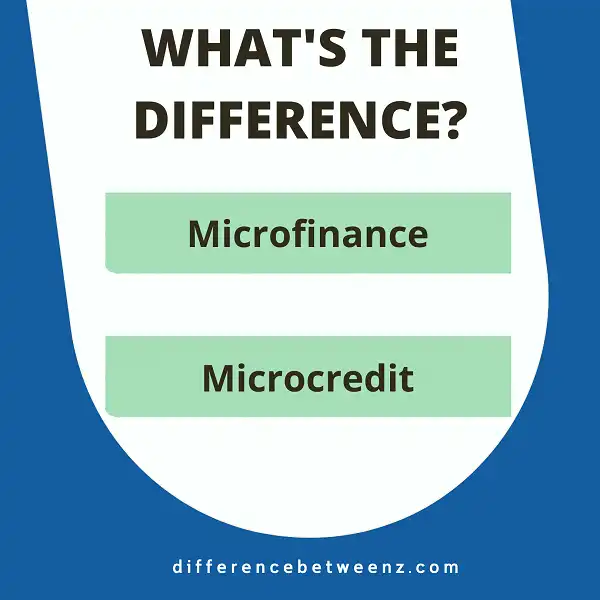Microcredit and microfinance are two terms that are often used interchangeably, but there is a difference between the two. Microcredit is the provision of very small loans to poor borrowers who typically cannot access traditional banking products. Microfinance, on the other hand, is a broader term that includes microcredit as well as other financial services such as savings, insurance, and credit products. In this blog post, we will explore the differences between microcredit and microfinance and discuss why both are important for promoting financial inclusion.
What is Microfinance?
Microfinance is the provision of financial services to low-income individuals or households. Microfinance includes a wide range of services, such as loans, savings, insurance, and money transfers.
- Microfinance is designed to help poor people access financial services that they would otherwise be unable to obtain.
- Microfinance has been shown to be an effective tool for reducing poverty and empowering women.
- Microfinance institutions typically charge higher interest rates than banks, but they offer flexible repayment terms and often provide other services, such as business training and advice.
- Microfinance is a growing industry, with over 1,000 microfinance institutions operating in more than 100 countries.
What is Microcredit?
Microcredit is a financial services product typically offered to low-income entrepreneurs and small business owners who lack access to traditional banking products. Microcredit products usually include small loans, credit builder loans, and savings products designed to help customers grow their businesses and build credit history.
- Microcredit products are typically offered by specialized microfinance institutions, community development financial institutions, and some traditional banks.
- The Microcredit Summit Campaign defines microcredit as “Credit provided to an individual or group of individuals too poor to qualify for conventional bank loans” In order to be eligible for microcredit, customers must typically have a viable business plan and demonstrate their ability to repay the loan.
- While repayment rates vary depending on the type of microcredit product and the financial institutions offering it, microcredit products have generally been found to be quite successful in helping customers grow their businesses and improve their lives.
Difference between Microfinance and Microcredit
Microfinance is a term used to describe financial services that are provided to low-income individuals or groups who lack access to traditional banking services. Microcredit is one type of microfinance and refers specifically to the provision of small loans to these individuals or groups.
- Microfinance can also include other types of financial services such as savings accounts, insurance, and money transfers.
- The main difference between microfinance and microcredit is that microcredit focuses specifically on the provision of loans while microfinance encompasses a wider range of financial services.
- Microcredit is often seen as a more sustainable solution because it helps borrowers to develop a credit history and access larger loans in the future, whereas microfinance is often seen as a more charitable solution because it does not require borrowers to repay their loans.
Microcredit is more likely to lead to long-term economic empowerment for borrowers, while microfinance is more likely to provide immediate relief from poverty.
Conclusion
Microcredit is a type of microfinance that specifically lends to entrepreneurs and small businesses. It is designed to help these business owners start or expand their businesses, with the goal of creating jobs and stimulating economic growth. Microcredit typically offers smaller loans than traditional banking institutions, making it more accessible to those in need. However, microcredit can come with high-interest rates and other fees, so it’s important to do your research before you borrow. If you’re interested in learning more about microcredit or applying for a loan, we recommend checking out Kiva Zip – they offer low-interest loans to qualified borrowers all over the world.


